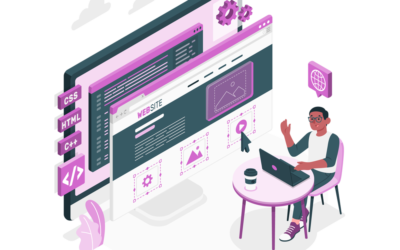The Role of User Experience (UX) in Website Development
In the world of web development, user experience (UX) and user interface (UI) play a crucial role in shaping the success of a website. In this blog, we will explore the significance of UI/UX in web development, their impact on user engagement and satisfaction, and the best practices for creating immersive digital experiences.
Understanding UI and UX :
UI refers to the visual design and layout of a website, focusing on elements such as colors, typography, buttons, and overall aesthetics. On the other hand, UX encompasses the overall experience a user has while interacting with a website, including ease of navigation, content organization, and functionality. Both UI and UX work together seamlessly to create a enjoyable user journey.
Enhancing User Engagement :
Effective UI/UX design is essential for engaging users and keeping them on your website. Intuitive navigation, clear call-to-action buttons, and visually appealing design elements encourage users to explore and interact with your content. By prioritizing user engagement through thoughtful UI/UX design, you can increase the time users spend on your website, reduce bounce rates, and ultimately drive conversions.
Improving Usability and Accessibility:
UI/UX design focuses on improving usability and accessibility, ensuring that your website is easy to navigate and understand for all users. Clear information architecture, logical page layouts, and intuitive interaction patterns make it easier for visitors to find what they’re looking for. Accessibility features such as alt text for images, appropriate color contrasts, and keyboard navigation options cater to users with disabilities and provide an inclusive experience for all.
Optimizing Mobile Experience:
With the rise in mobile usage, responsive design and mobile optimization have become crucial for UI/UX. Ensuring that your website adapts seamlessly to different screen sizes and devices enhances the mobile user experience. Mobile-friendly interfaces, touch-friendly elements, and fast loading speeds on mobile devices contribute to better user engagement and satisfaction.
Building Trust and Credibility:
A well-designed UI/UX instills trust and credibility in your brand. Consistent branding, professional design elements, and attention to detail create a positive impression on users, conveying that your website and business are trustworthy. By prioritizing user-centered design principles and delivering a seamless experience, you can build a strong reputation and foster customer loyalty.
Conducting User Research and Testing:
UI/UX design is an iterative process that involves user research and testing. By understanding your target audience’s needs, preferences, and pain points, you can create a design that resonates with them. Conducting usability tests and gathering feedback throughout the development process allows you to identify areas of improvement and make data-driven design decisions, ultimately resulting in a better user experience.
In today’s digital landscape, UI/UX design is paramount to the success of web development. Prioritizing user engagement, usability, accessibility, mobile optimization, and trust-building through effective UI/UX practices can lead to a competitive advantage and a satisfied user base.





